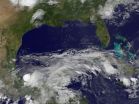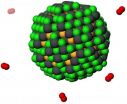(Press-News.org) St. Louis, Mo. (June 9, 2014) – Startling data from an international multi-center trial provide growing evidence that sentinel node imaging is more effectively accomplished with hybrid functional imaging with single photon emission computed tomography and computed tomography (SPECT/CT) than with another molecular imaging technique called lymphoscintigraphy. This conclusion held after imaging a range of cancers displaying a variety of lymphatic drainage types associated with melanoma, an aggressive skin cancer; breast carcinoma; and malignancies of the pelvis, such as prostate and cervical cancer, say researchers at the Society of Nuclear Medicine and Molecular Imaging's 2014 Annual Meeting.
Lymph node imaging is an essential tool in the context of surgical resection, because cancer spreads first to the lymph nodes, specifically the sentinel lymph nodes, before navigating the bloodstream and developing new malignancies elsewhere in the body. Molecular imaging of these sentinel nodes provides a surgical map that can improve a patient's chances of becoming cancer free.
"We found significantly more sentinel lymph node involvement with SPECT/CT, which altered surgical planning for many of our patients—a finding that was repeated across all malignancies and clinical institutions," said Thomas N.B. Pascual, MD, co-author of the study and a research scientist from the section of nuclear medicine and diagnostic imaging and division of human health of the International Atomic Energy Agency in Vienna, Austria. "These results could potentially inform new clinical practice and shape appropriate use of SPECT/CT imaging for patients selected for surgery."
Study findings showed that SPECT/CT breast cancer imaging caught 13 percent more cancerous sentinel nodes—2,165 nodes versus 1,892 using planar lymphoscintigraphy. The hybrid SPECT system also caught 11.5 percent more sentinel nodes when imaging for melanoma, with 602 versus 532 nodes detected. In addition, 29.2 percent more nodes were imaged using SPECT/CT to detect pelvic cancer—195 nodes found versus 138 with planar imaging.
Changes in surgical planning as dictated by SPECT/CT were substantial—16.9 percent of breast cancer surgeries underwent a change in management, 37 percent of surgeries for melanoma changed and 64.1 percent of surgical plans for pelvic cancer were changed due to detection of additional sentinel nodes. Calculated mismatch between sentinel nodes and lymphatic territories using the two imaging systems was gauged at 17 percent for breast carcinoma, 11.2 percent for melanoma and 50 percent for pelvic imaging. The significantly higher mismatch in pelvic tumors was thought to be due to relatively deeper lymphatic drainage and location of pelvic sentinel nodes.
Cancers are a leading cause of death. The most recent data available shows that cancers were the cause of 8.2 million deaths worldwide in 2012, according to the World Health Organization. Annual cancer diagnoses are expected to increase more than 60 percent from 14 million in 2012 to 22 million within the next two decades. Lung, liver, stomach, colorectal and breast cancers cause the most cancer deaths each year.
INFORMATION:
Scientific Paper 565: Amelia Jimenez-Heffernan, Hospital Juan Ramón Jiménez, Huelva, Spain; Annare Ellmann, Stellenbosch University and Tygerberg Hospital, Tygerberg, South Africa; Heitor Sado, University of Sao Paolo, Sao Paolo, Brazil; R. Parameswaran, Manipal Hospital, Bangalore, India; Rossana Pruzzo, Fundación Arturo López Pérez, Santiago, Chile; Francesco Giammarile, Centre Hospitalier Lyon, Lyon, France; Paulo Almeida, Universidade Federal de Pernambuco, Recife, Brazil; Vincent Peter Magboo, University of Sto Tomas, Manila, Philippines, The Netherlands Cancer Institute, Amsterdam, Netherlands; Thomas NB Pascual, Section of Nuclear Medicine and Diagnostic Imaging, Division of Human Health, International Atomic Energy Agency, Vienna, Austria, "Prospective IAEA sentinel node trial on the value of SPECT/CT vs planar imaging in various malignancies," SNMMI's 61th Annual Meeting, June 7, 2014, St. Louis, Missouri.
About the Society of Nuclear Medicine and Molecular Imaging
The Society of Nuclear Medicine and Molecular Imaging (SNMMI) is an international scientific and medical organization dedicated to raising public awareness about nuclear medicine and molecular imaging, a vital element of today's medical practice that adds an additional dimension to diagnosis, changing the way common and devastating diseases are understood and treated and helping provide patients with the best health care possible.
SNMMI's more than 18,000 members set the standard for molecular imaging and nuclear medicine practice by creating guidelines, sharing information through journals and meetings and leading advocacy on key issues that affect molecular imaging and therapy research and practice. For more information, visit http://www.snmmi.org.
Presurgical SPECT/CT shows more cancer than current standard
Comprehensive clinical trial shows how additional cancer of the lymph nodes becomes clear with SPECT/CT compared to planar imaging of the skin, breast and pelvis
2014-06-09
ELSE PRESS RELEASES FROM THIS DATE:
Connecting dead ends increases power grid stability
2014-06-09
Climate change mitigation strategies such as the German Energiewende require linking vast numbers of new power generation facilities to the grid. As the input from many renewable sources is rather volatile, depending on how much the wind blows or the sun shines, there's a higher risk of local power instabilities and eventually blackouts. Scientists from the Potsdam Institute for Climate Impact Research (PIK) now employed a novel concept from nonlinear systems analysis called basin stability to tackle this challenge. They found that connecting dead ends can significantly ...
Einstein & Montefiore present research at American Diabetes Association Scientific Sessions
2014-06-09
June 9, 2014 – (BRONX, NY) – Investigators at Albert Einstein College of Medicine of Yeshiva University and Montefiore Medical Center will present their latest research at the American Diabetes Association's 74th Scientific Sessions. Einstein-Montefiore scientists and clinicians are participating in nearly three dozen presentations, sessions and symposia during the five-day meeting. They will address a range of basic, translational and clinical research topics—from medication adherence in adolescents and the impact on resveratrol and vitamin D on insulin resistance to epigenetic ...
Designing ion 'highway systems' for batteries
2014-06-09
Since the early 1970s, lithium has been the most popular element for batteries: it's the lightest of all metals and has the greatest electrochemical potential.
But a lithium-based battery has a major disadvantage: it's highly flammable, and when it overheats, it can burst into flames. For years, scientists have searched for safer battery materials that still have the same advantages as lithium. While plastics (or polymers) seemed like an obvious choice, researchers never fully understood how the material would change when an ion charge was introduced.
Now a Northwestern ...
CU researchers explain mechanism that helps viruses spread
2014-06-09
AURORA, Colo. (June 9, 2014) – In an article published in the scientific journal Nature, a University of Colorado School of Medicine researcher and colleagues explain how RNA molecules found in certain viruses mimic the shape of other molecules as part of a strategy to 'hijack' the cell and make more viruses.
The findings by Jeffrey S. Kieft, PhD, associate professor of biochemistry and molecular genetics at the School of Medicine and an early career scientist with the Howard Hughes Medical Institute, and his colleagues solve a biochemical and molecular mystery that has ...
Satellite sees System 90L dissipating over Mexico
2014-06-09
NASA and NOAA satellites are gathering visible, infrared, microwave and radar data on a persistent tropical low pressure area in the southwestern Bay of Campeche. System 90L now has a 50 percent chance for development, according to the National Hurricane Center and continues to drop large amounts of rainfall over southeastern Mexico.
The Atmospheric Infrared Sounder (AIRS) instrument aboard NASA's Aqua satellite gathered infrared data on the developing low on June 5 at 18:59 UTC (2:59 p.m. EDT).
Basically, AIRS looks at the infrared region of the spectrum. In a spectrum, ...
Scientists may have identified echoes of ancient Earth
2014-06-09
A group of scientists believe that a previously unexplained isotopic ratio from deep within the Earth may be a signal from material from the time before the Earth collided with another planet-sized body, leading to the creation of the Moon. This may represent the echoes of the ancient Earth, which existed prior to the proposed collision 4.5 billion years ago. This work is being presented at the Goldschmidt conference in Sacramento, California.
The currently favoured theory says that the Moon was formed 4.5 billion years ago, when the Earth collided with a Mars-sized mass, ...
Surgery prices are elusive
2014-06-09
Let's say you're buying a car. You have a wealth of data at your fingertips, from safety information to performance, to guide your decision.
The same is not as true in health care, especially if you're pricing procedures. A new study from the University of Iowa compared the cost of prostate cancer surgery at 100 hospitals throughout the United States. The quote for the procedure, the researchers found, varied from $10,100 to $135,000, a 13-fold range. (The average price was nearly $35,000, more than double the Medicare reimbursement.)
Only 10 of the hospitals that provided ...
New class of nanoparticle brings cheaper, lighter solar cells outdoors
2014-06-09
TORONTO, ON — Think those flat, glassy solar panels on your neighbour's roof are the pinnacle of solar technology? Think again.
Researchers in the University of Toronto's Edward S. Rogers Sr. Department of Electrical & Computer Engineering have designed and tested a new class of solar-sensitive nanoparticle that outshines the current state of the art employing this new class of technology.
This new form of solid, stable light-sensitive nanoparticles, called colloidal quantum dots, could lead to cheaper and more flexible solar cells, as well as better gas sensors, infrared ...
With distance comes greater wisdom, research finds
2014-06-09
If you're faced with a troubling personal dilemma, such as a cheating spouse, you are more likely to think wisely about it if you consider it as an observer would, says a study led by a professor at the University of Waterloo.
Professor Igor Grossmann, of Waterloo, and Professor Ethan Kross from the University of Michigan, asked study participants to reflect on a relationship conflict of their own or someone else's, such as a spouse's infidelity with a close friend, and think about the conflict in the first and third person. The findings will appear in an upcoming issue ...
Online marketing schemes can still lure in customers
2014-06-09
Despite warnings and legislation, online consumers may still be susceptible to post-transaction marketing schemes, according to Penn State researchers.
At least 40 percent of consumers who made an online purchase in a study bought an additional product, even though it offered no extra value, said Jens Grossklags, assistant professor of information sciences and technology.
"The focus of this study was to determine the likelihood that a consumer would accept an offer after they had already made a purchase," said Grossklags. "What stood out was the vast number of people ...
LAST 30 PRESS RELEASES:
Study reveals that the body uses different sensors to detect cold in the skin and in internal organs
iPS cells from dish to freezer and back
Deep neural networks enable accurate pricing of American options under stochastic volatility
Collective risk resonance in Chinese stock sectors uncovered through higher-order network analysis
Does CPU impact systemic risk contributions of Chinese sectors? Evidence from mixed frequency methods with asymmetric tail long memory
General intelligence framework to predict virus adaptation based on a genome language model
Antibiotic resistance is ancient, ecological, and deeply connected to human activity, new review shows
Vapes, pouches, heated tobacco, shisha, cigarettes: nicotine in all forms is toxic to the heart and blood vessels
From powder to planet: University of Modena engineers forge a low-carbon future for advanced metal manufacturing
Super strain-resistant superconductors
Pre-school health programme does not improve children’s diet or physical activity, prompting call for policy changes, study finds
Autumn clock change linked to reduction in certain health conditions
AI images of doctors can exaggerate and reinforce existing stereotypes
Where medicine meets melody – how lullabies help babies and parents in intensive care
We may never be able to tell if AI becomes conscious, argues philosopher
AI video translation shows promise but humans still hold the edge
Deep ocean earthquakes drive Southern Ocean’s massive phytoplankton blooms, study finds
Without campus leftovers to pick through, the beaks of this bird changed shape during the pandemic
High-dose antibiotic does not reduce mortality in tuberculous meningitis
How many insects fly in the sky above the USA?
Could cheese protect your brain health?
Who faces more difficulty recovering from stroke?
Colliding galaxies create the brightest, fastest growing black holes at their center
New BrainHealth research reveals tradeoffs on sleep with cannabis use for chronic pain
Aging-US now on ResearchGate, enhancing visibility for authors and readers
'Molecular glue' stabilizes protein that inhibits development of non-small cell lung cancer
Mount Sinai Health System is recognized in 2025 Chime Digital Health Most Wired survey
From prey to predator: How carnivores spread beneficial fungi
Menopause symptoms may be frequent and have negative effects, according to female endurance athletes
US Congressmembers’ responses on X to mass shooting events differ along party lines
[Press-News.org] Presurgical SPECT/CT shows more cancer than current standardComprehensive clinical trial shows how additional cancer of the lymph nodes becomes clear with SPECT/CT compared to planar imaging of the skin, breast and pelvis


